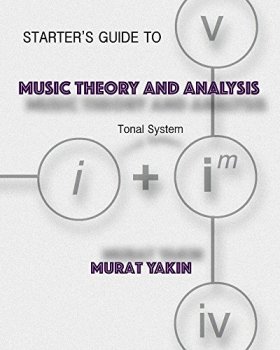English | 2016 | ISBN: 1534975918 | 258 Pages | PDF (True) | 134 MB
英文简介:
This is a step by step guide for music theory and analysis for the beginners. From basics of musical notation to the principles of tonality, all of the difficult subjects of music theory are explained in detail, with demonstrations.
The student is prepared for analysis studies step by step. The exercises provided at the end of each chapter (and sometimes extra exercises in the middle of a chapter) are designed for the student to develop what she/he learned by reading and prepare herself/himself for the next challenge.
Music theory is generally a scary subject for musicians. This is not true for a person who is capable of developing connections between different aspects of music theory and is able to practice them in a fluid way. That is because the practice holds the analytical secrets inside and the person who opens it is awarded. For most of the students, practicing scales or practicing chords of a scale is something just very very low profile work. The fingers memorize which key on the piano to be pressed in which order when the piano is chosen as the instrument for assistive training, but the brain does not want to develop connections between different aspects of the same theoretical practice such as playing a major scale first, let's say G major, and then playing a different one, let's say A-flat major. The result is a temporary learning of scale practicing, but a possible failure in music theory, since the rules which are just there to see are not exercised at the same time. We observed that a long-term learning is possible by practicing and examining what is practiced to make connections. We searched a way to show these connections in this book.
Analysis is another problem in academic education of music. Students from different majors are excepted to make a standard level analysis of musical works from literature. The most difficult thing for those whose major is not composition or theory, who have a strong focus on the matter, is to recognize the chords in a given texture, to eliminate the unnecessary tones, and by this way, to identify the way chord progressions are held in the piece to explain the functionality of the elements used in music. That is the main goal of musical analysis and any level of failure, which also includes composition and theory majors sometimes, becomes a huge headache for both student and the teacher.
This book suggests a path to quickly train the lower level students in a class in basics and then to train the medium level and upper level students (along with the trained lower levels) in a different manner than the conventional music theory training does so that even the higher levels will re-consider their knowledge on the facts which will allow them go in the details deeper, and even inspire the way think music and musical analysis. Analysis is expected to be a quiet easy skill that student uses in a fluent way.
The book provides exercises at the end of every chapter. The study of these exercises should be sufficient for a basic level learning. The exercises usually cover more than one aspect of a goal in separate questions.
Among the other powerful features of this book, we can mention the chapters on musical design. The music student usually learns only one dimension of identification of chords in music which lacks of concerning the textural differences. We find it essential to mention main textural differences and demonstrate how to approach them in order to make a good analysis at the beginner level. We think the basic music theory training should include such an unpronounced aspect of analysis. We also explain the effect of instrumental choice in the work and what to expect to see as well as how to approach different setups for analysis by demonstrations, including orchestral writing.







评论0